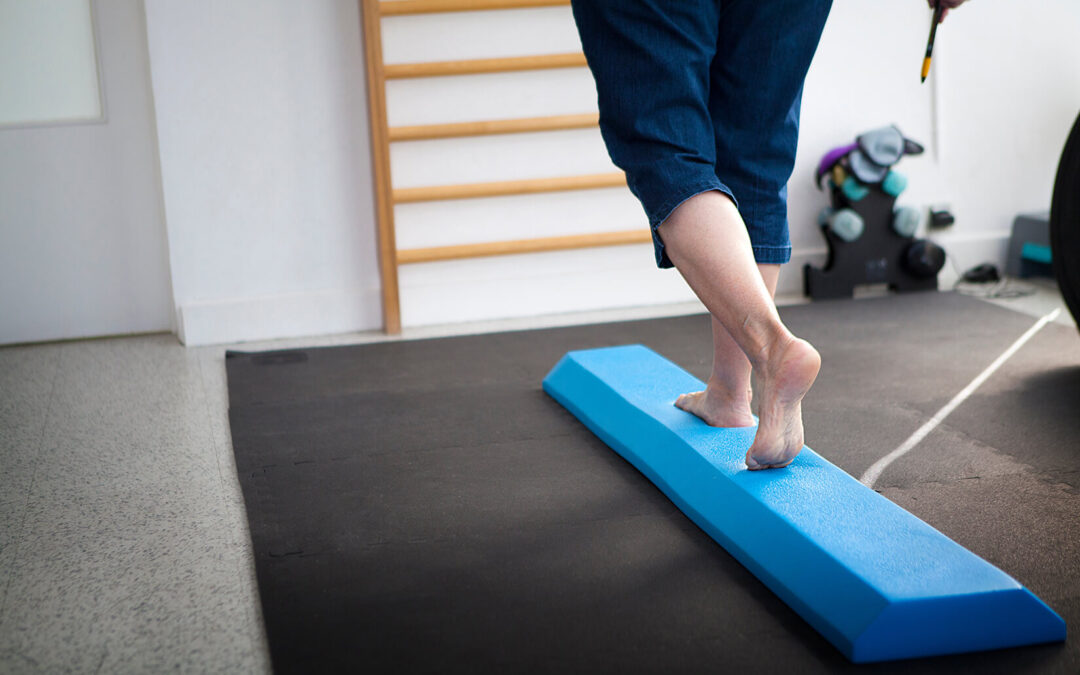The meniscus is a C-shaped piece of cartilage located between the knee joints. It acts as a shock absorber and stabilizer and is vital for maintaining balance and forward propulsion when walking or running. When the meniscus is injured, people usually experience issues with their mobility and have trouble keeping their balance.
Meniscal tears are among the most common knee injuries seen by physical therapists and can occur either during sports activities or as a degenerative effect of aging. While most instances of meniscus tears are considerably minor and can be treated with physical therapy and self-care, surgery is almost always necessary to repair more significant tears, resulting in a lengthier recovery timeframe.
As the first line of treatment, physical therapy has made major strides in treating a torn meniscus. Here, we’ll discuss the signs and symptoms of a torn meniscus and how physical therapy provides holistic and non-invasive options to those suffering from a meniscal injury.
Causes and Symptoms of Meniscus Tears
Meniscus tears are the knee’s shock absorbers, and they experience a lot of wear and tear when cushioning direct impact or forceful movement. Because of this, the meniscus is most commonly torn during activities where sudden twisting, pivoting, or stopping occurs, such as in soccer, basketball, or skiing.
Alternatively, the meniscus can degenerate with age. The meniscus becomes weaker and more susceptible to tearing with minimal stress as we age. Degenerative meniscal tears can exist alongside osteoarthritis, increasing inflammation and pain in the knee area.
Common symptoms and indicators of a meniscus tear include:
- Pain in the knee joint and in surrounding areas along the joint line
- Noticeable swelling around the knee joint area
- “Catching” or “locking” sensations in the knee
- A “popping” sound or sensation at the time of injury
- Knee instability or feeling like your knee will give out
- Limited range of motion and stiffness
If you are experiencing any of these, you should visit an orthopedic doctor to evaluate your knee and order imaging and testing. If your orthopedist suspects a torn meniscus, they will order magnetic resonance testing (MRI) to collect images of the damaged meniscus and gather results for you to share with your physical therapist.
How to Know If Surgery is Necessary
Smaller meniscal tears can be easily repairable with rest and physical therapy, while larger tears can be more complex and require surgery. Based on your doctor’s recommendations and MRI results, you can expect to have a quick answer on whether surgery will be required or not.
The surrounding area of the meniscus can be divided into three zones. One-third of the area is known as the “red zone,” where the blood supply is rich enough to sustain adequate healing and natural repair. The other two-thirds of this area is known as the “white zone,” where the blood supply isn’t as rich and can’t support natural growth and repair of the injured area. Tears that are large enough to enter the “white zone” zone likely require surgery to repair.
Whether surgery is required or not, physical therapy is used in either instance to ensure that safe rehabilitation processes are taking place and that preventative measures are being taken in your healing process.
Benefits of Physical Therapy
While many people with meniscus tears are led to believe that surgery is the only option for repair, physical therapy has made several improvements in developing a non-invasive and holistic form of recovery. Depending on the severity of the tear, physical therapy can be beneficial to healing both minor meniscal tears without surgery or aid in the recovery and rehabilitation of major meniscal tears after surgery.
Physical therapy focuses on strengthening the muscles around the knee joint. This helps stabilize the knee and support the area so that the meniscus can heal. Strengthening and rehabilitating these muscles improves the knee’s overall stability, minimizing the chances of reinjury. Through various exercises, massage techniques, and aerobic conditioning, physical therapy offers a drug-free option for pain management and overall health.
In many cases, patients who utilize physical therapy to treat minor meniscal tears are able to get back to their regular activities quicker than with surgery only.
What to Expect During A Physical Therapy Session
Physical therapy treatment plans can vary based on the severity of your meniscus tear, how you injured it, and your overall health. Your physical therapist will review any medical records or documentation, such as your MRI results, and perform a consultation to get an idea of your pain levels, ranges of motion, and recovery goals. After your consultation, you can expect to receive a care plan that covers the following:
Pain Management Techniques: Techniques such as rest, ice, compression, and elevation (R.I.C.E) can be used to minimize pain and swelling. Other approaches to pain management include ice and heat therapy or electric stimulation to target pain areas and reduce inflammation.
Stretching Exercises: Stretching various areas of your leg can help keep your knee flexible and maintain a wide range of motion. Targeting stretches toward surrounding muscles such as the calves, quads, and hamstrings can all be beneficial to meniscus recovery as they strengthen the knee as a whole.
Manual and Massage Therapy: When stiffness and tension are present, joints can become immobile and inflamed. Manual therapies use hands-on techniques to massage tight muscles and mobilize joints for increased flexibility and movement. When tension is released, and muscles are loosened, exercises can be performed more efficiently for a quick and safe recovery.
Aerobic Conditioning: Your physical therapist may recommend minimizing weight-bearing or high-impact exercises such as running or jumping. As part of your recovery, you can expect to get recommendations for other means of exercise, such as swimming or cycling, to maintain your fitness and cardiovascular health without further impacting your knee joints.
Strength Training: Combined with stretching, exercising targeted areas such as your quads, hamstrings, and calves can strengthen the surrounding areas of your knee and provide extra stability while your meniscus heals.
After therapy sessions, your physical therapist will provide a personalized set of exercises and stretches to do at home to aid your recovery process. Performing these exercises as recommended by your therapist can speed up your healing process and ensure that your recovery goes according to plan. The average duration of physical therapy can last anywhere from 4 to 8 weeks, though complex or post-surgery cases may require more time.
Rehabilitating with Total Physical Therapy
Meniscus tears can be frustrating and painful, but our experienced therapists at Total Physical Therapy in Denver, Colorado, can help you get back to the life you love. With customized care plans and noninvasive approaches to pain management and injury rehabilitation, we are prepared to give you the care you need to achieve your wellness goals.
As the leading physical therapy clinic in Denver, Total Physical Therapy welcomes all patients. Whether you are looking to recover from a minor meniscus tear or are exploring options before or after surgery, we can help. Schedule an appointment on our website or give us a call at 303-758-5060 to set up your therapy session today!




